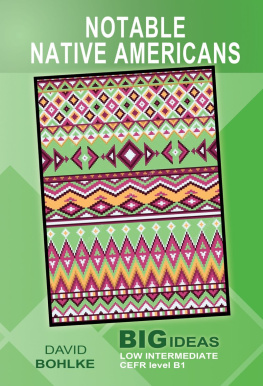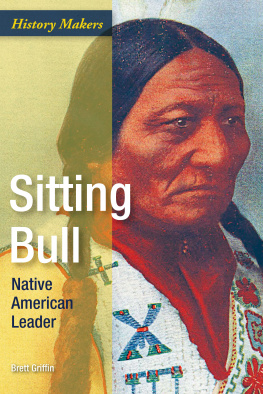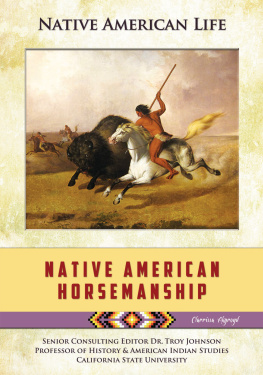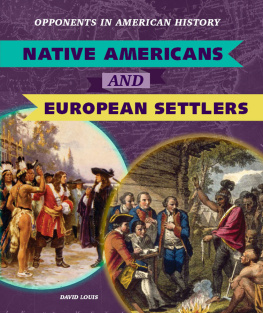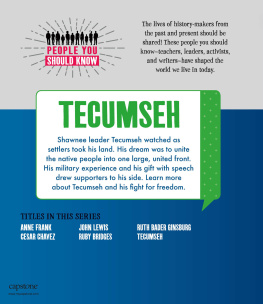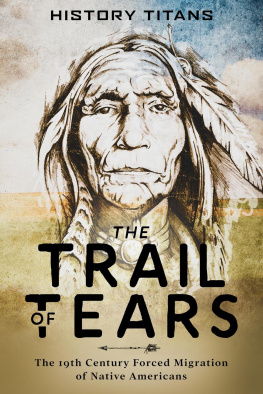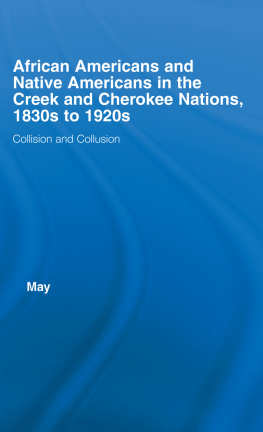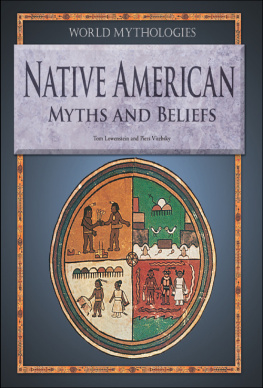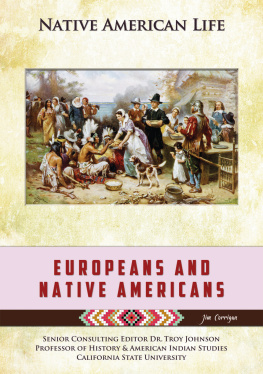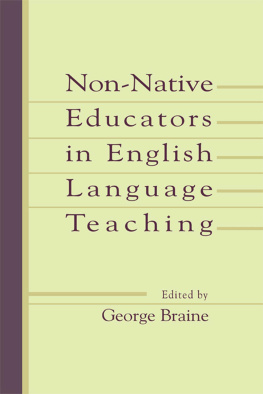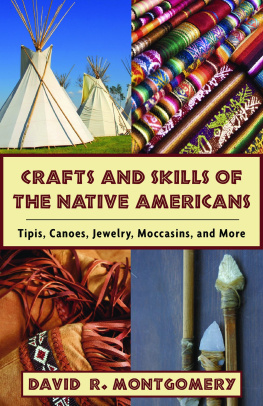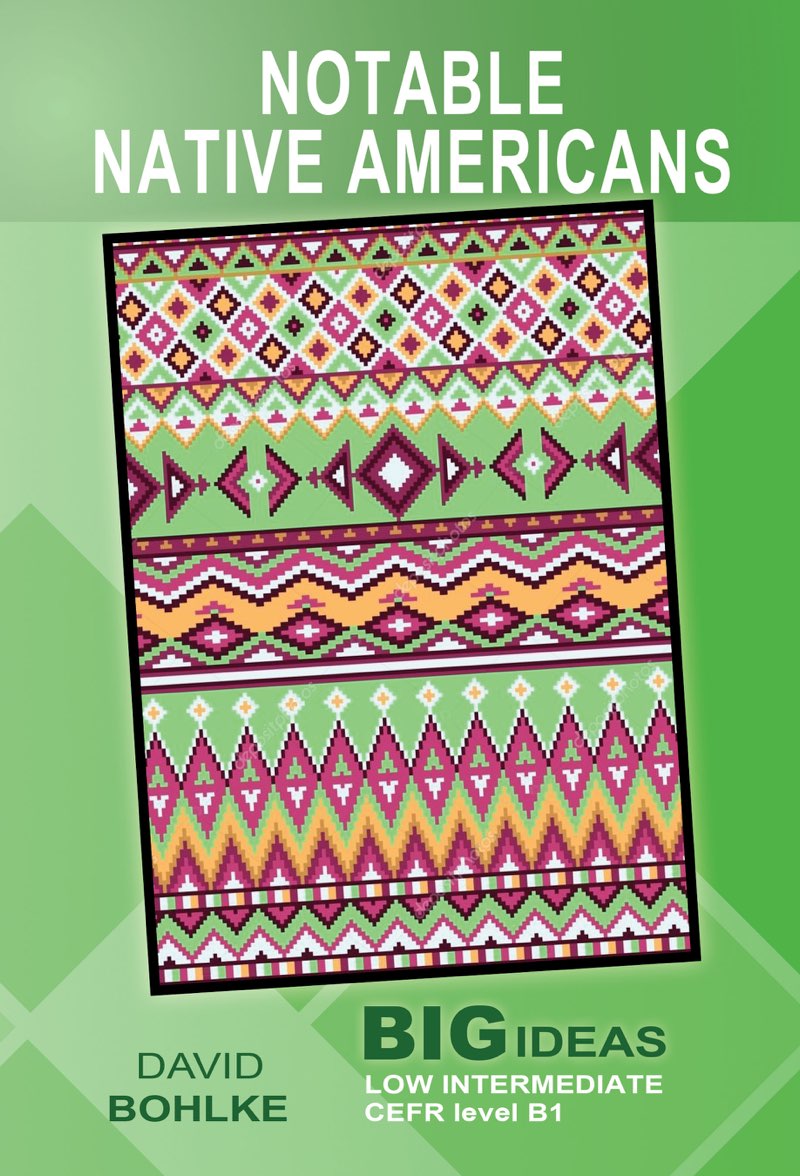Notable Native Americans
Big Ideas: Low Intermediate
David Bohlke
Copyright 2021 by Wayzgoose Press
All rights reserved.
No part of this book may be reproduced in any form or by any electronic or mechanical means, including information storage and retrieval systems, without written permission from the author, except for the use of brief quotations in a book review.
This text has been read for sensitivity to Native American issues by M. Sokolik, whose father and paternal aunts and uncles were associated with the Nisqually Nation in Washington State.
Introduction
Welcome to Big Ideas! This book explores the lives of Native Americans the people who were living on the American continent long before Europeans arrived on its shores. You will read about how they interacted with and sometimes befriended the new arrivals. You will also read about the conflicts that native peoples faced as settlers moved westward across the continent.
Names such as Squanto and Pocahontas may already be familiar to you, but you may not know the whole story. Its true that many details of their lives are unknown or clouded in mystery. But this book attempts to cut through the legend and discover the true story of their lives. This book also explores the lives of some lesser-known Native Americans, such as Sequoyah, the inventor of the Cherokee alphabet, and Susan La Flesche Picotte, the first Native American to earn a medical degree.
You will also read about more contemporary Native Americans such as Olympian Jim Thorpe, astronaut John Herrington, and poet Joy Harjo. In total, this book profiles 15 Native Americans from the 16th to the 21st centuries. They were chosen for the important contributions they have made to U.S. history and culture.
Reading about the lives of these Native Americans will help your reading fluency. You will read faster, and you will understand more. As you read, think about your relationship to the text and the person and events it describes. For example, does learning about a famous activist make you question what you believe in or what you feel is important? Do you have a different point of view from the writer? Would you have made similar choices in the same situation?
The Big Ideas series is designed to start interesting conversations between readers and writers, but also between readers and other readers. Every reader experiences a text differently. When you read something interesting, you often want to talk about it. You want to share a similar experience, or you may want to argue. Maybe your friend understands the text in a different way. When you listen to your friend, you have a third set of ideas and experiences to compare to your own world view.
While you learn about the lives of these Native Americans, Big Ideas is also helping you develop language skills. Because our focus is on providing a positive reading experience, more than 90 percent of the words in this book are among the most common 2,000 words in the English language. These are called high-frequency words. High-frequency words appear over and over again in speaking and writing.
You might think its easy to learn high-frequency words, and its true that many words are easy. Content words such as house, eat, and blue put a picture in your mind. They represent things you can see and name. These types of words often have one meaning, and you can understand them easily. However, other high-frequency words can have multiple meanings. For example, right can mean correct, as in You have the right answer. Or right can mean a direction, like Please turn right at the corner. The context or the situation decides a words meaning. Reading Big Ideas can help you use context to understand more high-frequency words.
While vocabulary has a strong relationship with grammar, grammar has a strong relationship with sentences. In order to give you a positive reading experience, we use easy-to-read sentences. We use grammar from low and intermediate levels, and we reduce synonyms and idioms. Our goal is to keep the big ideas, but present them in simple language.
Vocabulary and Culture Notes
This book is for intermediate-level readers. Almost all of the vocabulary is at the B1 level. However, when you read about real people, some specialized vocabulary is needed too.
You can learn these words before you read, or you can refer back to this section as necessary. You can also use a dictionary to check some words while you read, or figure out what words mean by thinking about the rest of the sentence. However, we recommend reading through the example sentences and notes below before beginning the book, no matter what vocabulary strategy you use.
Words for land
country: You are probably already familiar with this word, which means a land or territory governed by one political system. However, in North America, this word is used for the countries of Canada, the United States, and Mexico, and not for the individual Native American lands.
nation: Most (although not all) Native Americans use this word; for example, the Cherokee people belong to the Cherokee Nation.
native: An adjective meaning originally from. Of course, you see this word in the phrase Native Americans, which refers to the people already living in North America before Europeans arrived. You may sometimes see the word Indian in older books, because when early Europeans arrived in North America, they thought they had arrived in India. Since Indian was based on a mistake, it is not used much today.
reservation: An area of land belonging to one Native American nation. Reservations are a little like states in the United States, and can make their own laws and collect their own taxes, but may not create their own money or have an army. There are 326 reservations in the United States today, although nearly 80% of Native Americans do not live on a reservation.
tribe: A group of people. Some Native Americans refer to their people as a tribe instead of a nation.
wilderness: An undeveloped area of land, with forests or fields instead of houses and streets.
Words about conflict
Much of the history of the relationship between Native Americans and the Europeans who came to North America has been troubled. It is therefore not possible to talk about Native American history without some vocabulary for describing these conflicts.
battle: A fight between at least two groups or armies, usually lasting about a day.
capture: To catch someone and keep them against their will. He was captured by the police and kept in jail for three years.
fort: A place where an army lives and works.
memorial: A monument, such as a statue, that recognizes or honors a dead person.
military: The armed forces of a country, such as the army, navy, and air force.
prisoner: A person who is kept in prison (jail) or is captured by another person or group and held or kept, unable to leave.

